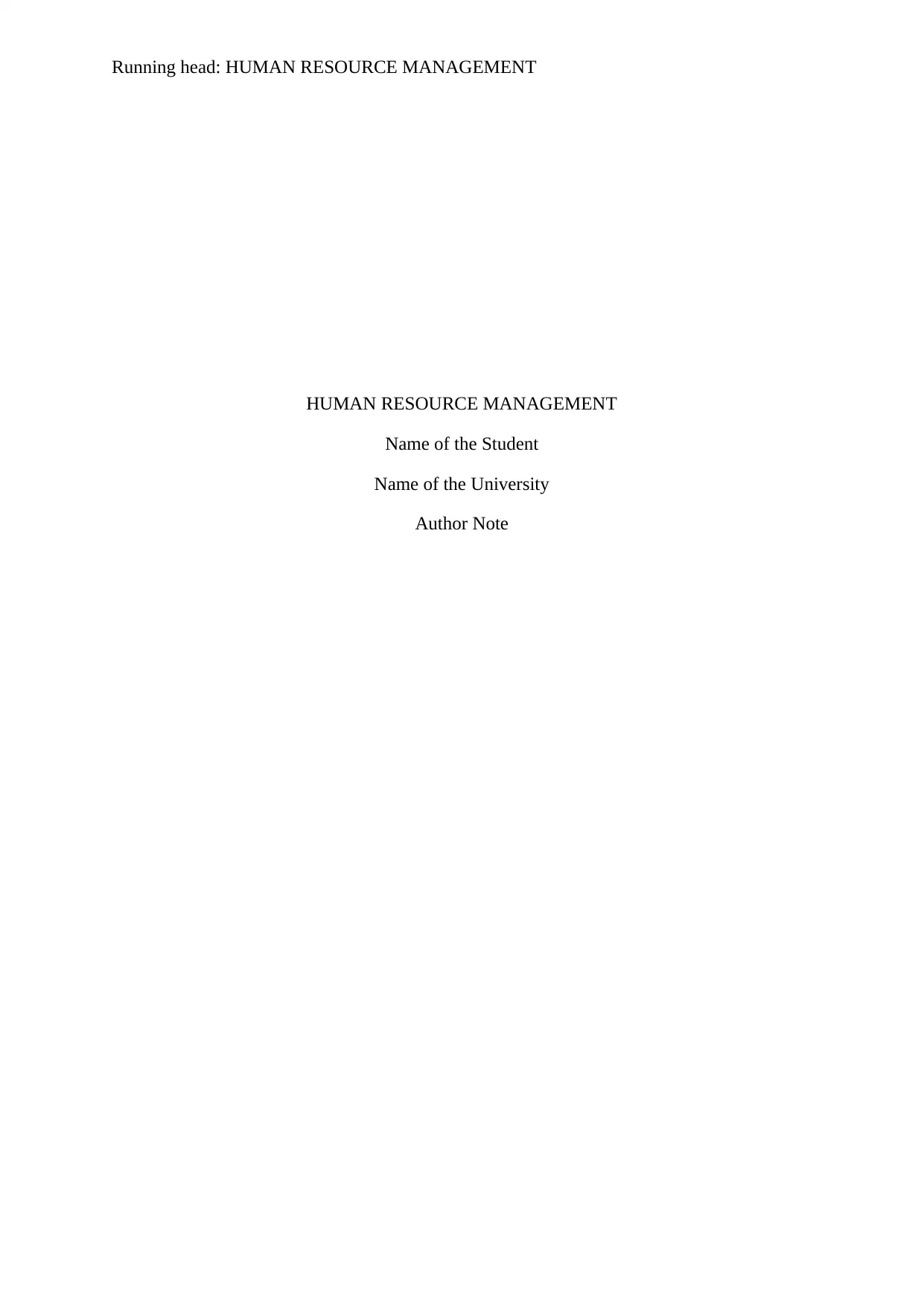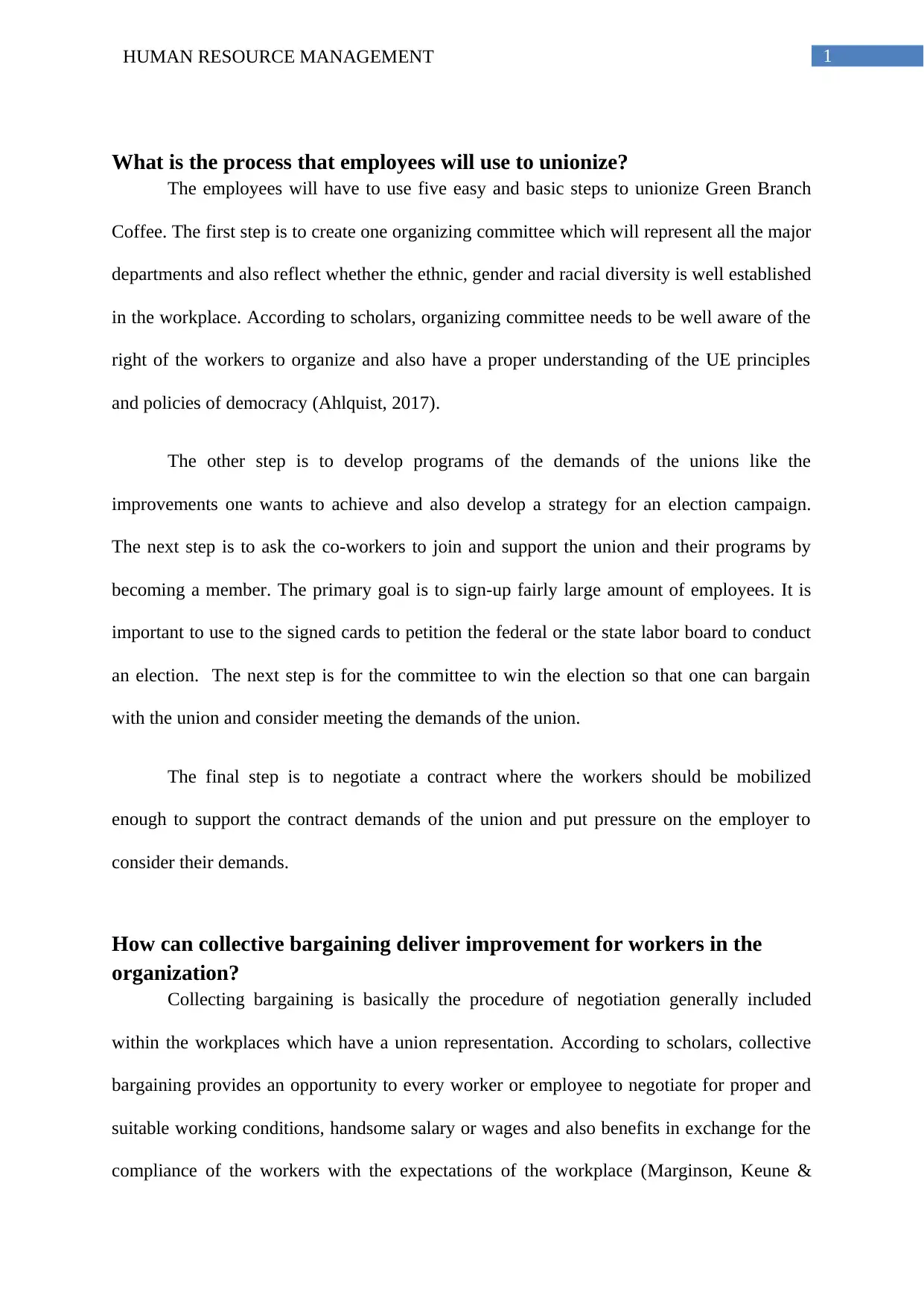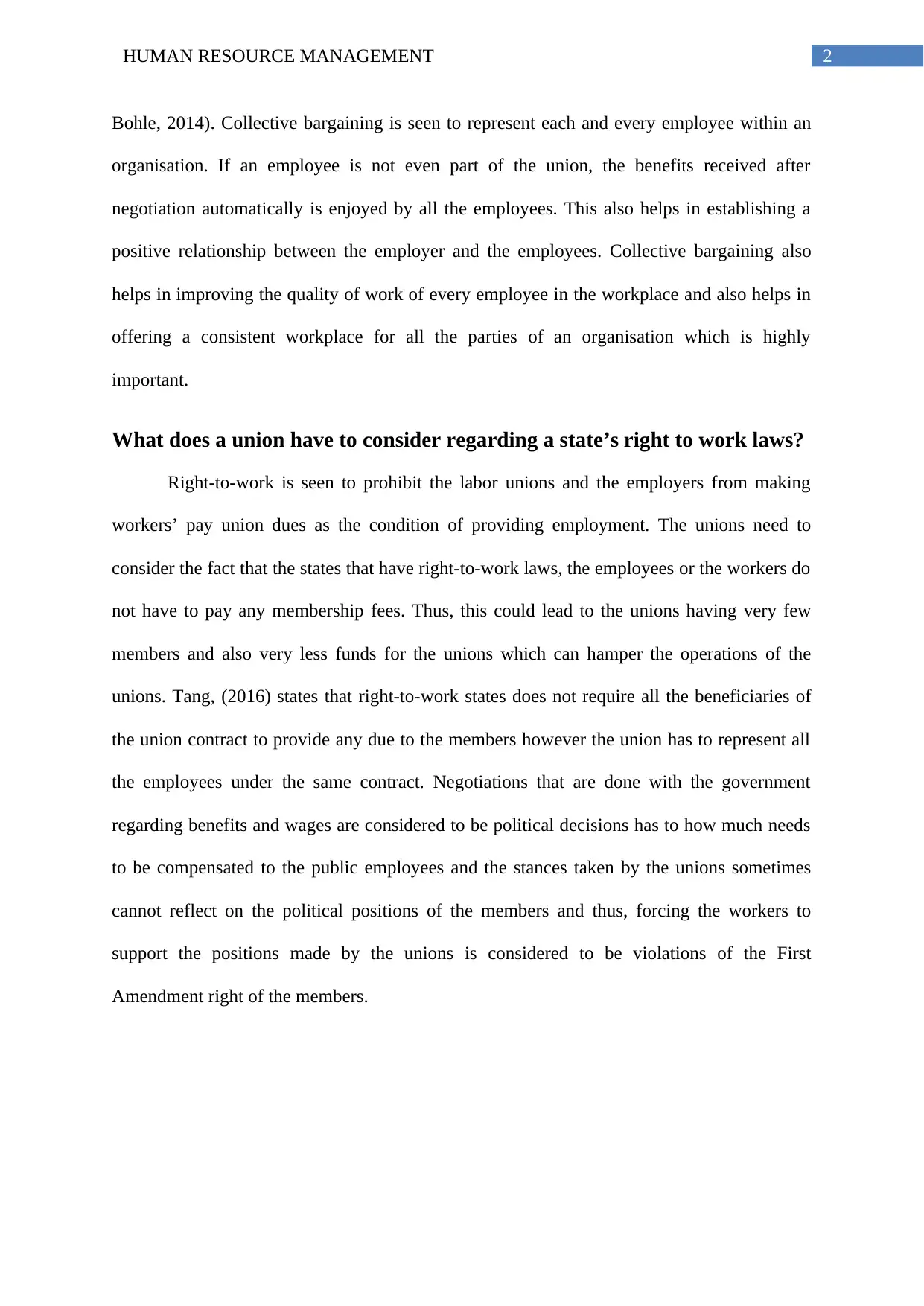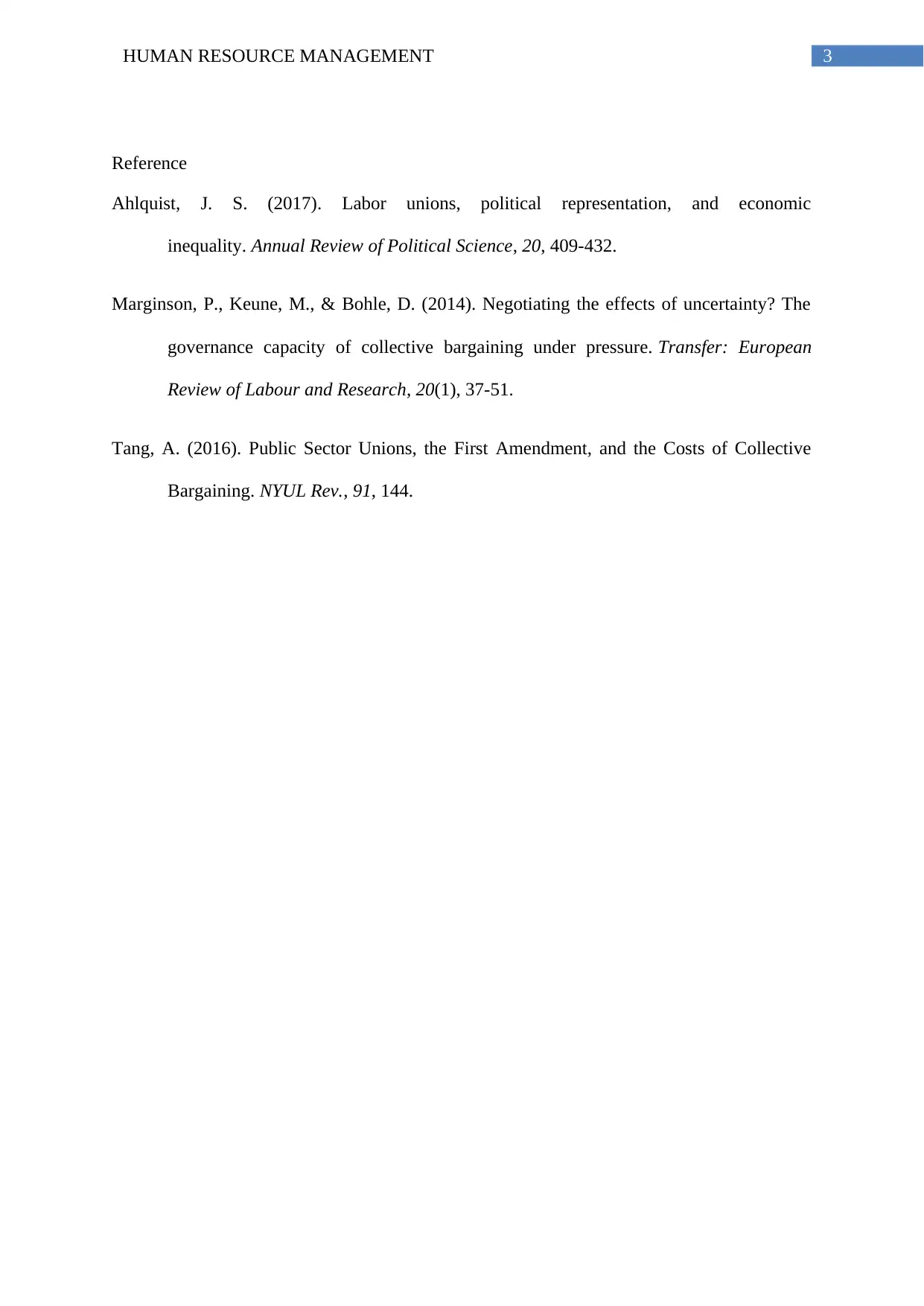Human Resource Management Assignment: Unionization and Labor Laws
VerifiedAdded on 2022/08/13
|4
|772
|19
Homework Assignment
AI Summary
This homework assignment on Human Resource Management delves into the critical aspects of unionization and collective bargaining. It outlines the five essential steps employees must take to unionize, using Green Branch Coffee as a case study. The assignment examines how collective bargaining can improve workers' conditions, including better wages, working conditions, and benefits, while also fostering positive employer-employee relationships. It further explores the considerations unions must make regarding state right-to-work laws, which prohibit mandatory union dues, and the potential impact on union membership and funding. The assignment highlights the complexities of labor laws and the balance between employee rights and union operations, referencing scholarly articles to support its analysis.
1 out of 4











![[object Object]](/_next/static/media/star-bottom.7253800d.svg)